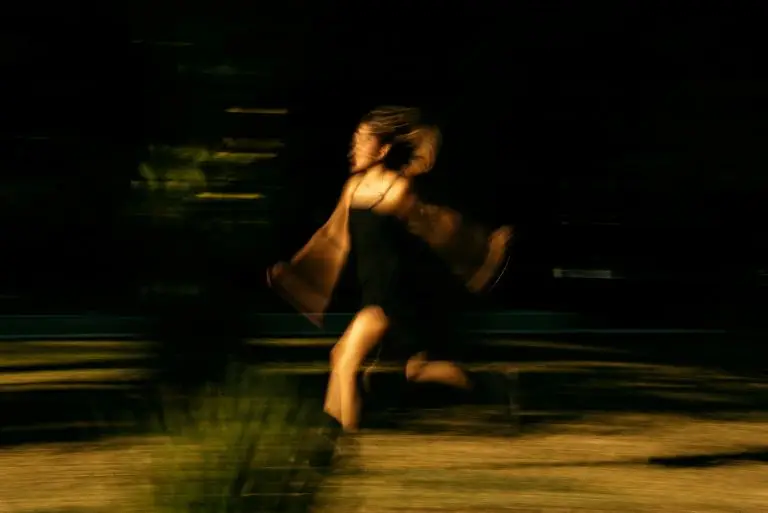Meditation for People Who Can’t Sit Still: How to Begin Without Forcing It
If the word meditation makes you think of sitting cross-legged in silence for hours—and if that image makes your skin crawl—you’re not alone.
Many people find it hard to sit still. Whether it’s restlessness, anxiety, ADHD, or just a busy schedule, the traditional image of stillness can feel alien, even impossible. But what if you could start meditating without having to sit still at all?
This post is for the fidgeters, the overthinkers, the pace-around-the-room types. If you’ve ever said, “I can’t meditate because I can’t sit still,” here’s the good news: you don’t have to. Meditation is about presence, not posture. And there are plenty of ways to begin—gently, naturally, and without forcing anything.
Why You Don’t Need to Sit Still to Meditate
Let’s clear something up. Meditation isn’t about freezing your body or silencing your thoughts. It’s about becoming aware—of your breath, your body, your surroundings, and your inner state. Stillness may support that awareness, but it’s not a requirement.
In fact, for many people (especially those with high energy or neurodivergent minds), movement supports awareness. It helps to anchor attention, release stress, and make the practice feel less rigid and more alive.
So if your body wants to move—move. You can still meditate.
Start With the Body: Movement as Meditation
One of the easiest ways to ease into meditation is through movement. Think of it as active mindfulness—not a separate practice, but a different doorway into the same room.
Here are a few beginner-friendly options:
1. Walking Meditation
Find a quiet path, even a small garden or hallway. Walk slowly and deliberately. Feel your feet meeting the ground. Notice the rhythm of your steps, the sway of your arms, the movement of air on your skin. No phone, no destination—just walking. When your mind wanders (it will), gently bring it back to your feet.
2. Gentle Yoga or Stretching
You don’t need a fancy studio or deep flexibility. Just ten minutes of slow, intentional movement with your breath can become a moving meditation. Pay attention to the sensations in your body. Let the movement guide your awareness inward.
3. Dance or Free Movement
Yes—dance can be meditation. Put on music that helps you tune in rather than tune out. Move however your body wants to. Let yourself feel, release, and express without judgement. Afterwards, sit for a minute. Notice how your body feels. That stillness may come more naturally once you’ve moved.
4. Breath-Led Movement
Inhale, raise your arms. Exhale, lower them. Even the smallest gesture can become meditative when breath leads the way. Try five minutes of linking breath and motion—no thinking, no forcing.
Begin your sacred inner journey: Get your free 7-Day Sacred Stillness Challenge and start today
The Power of Micro-Moments
If sitting for ten minutes feels like a mountain, don’t aim for ten minutes. Start with ten seconds. One deep breath. A short pause between tasks. A moment of noticing the breeze through the window or the warmth of your cup of tea.
These micro-moments matter. They train your brain to pause, to become aware. Over time, they build into something deeper.
Here are a few ways to sneak meditation into your day:
Close your eyes and take three deep breaths before replying to a message.
Feel the water on your hands while washing up.
Take one conscious breath every time you wait—at a red light, in a queue, on hold.
Sit quietly with your pet and just be.
It’s not about finding time. It’s about using the time you already have—differently.
Working With a Restless Mind
If your body is restless, your mind likely is too. Meditation doesn’t stop thoughts—it teaches you to relate to them differently. Instead of trying to silence your mind, try observing it.
Imagine sitting beside a river. Thoughts are like leaves floating by. You don’t have to jump in and chase them. You can just watch. Some float quickly, some slowly. You remain the witness.
Even five minutes of this kind of practice—lying down, sitting on a bench, swaying in your chair—can shift your state.
A helpful tip: use a soft focus. Instead of concentrating hard, try a relaxed attention—like watching clouds drift across the sky. That gentle awareness is enough.
Try Guided Practices (That Aren’t Boring)
Not all guided meditations are long and slow. Many apps and YouTube channels now offer:
Movement meditations (walking, standing, stretching)
ADHD-friendly practices with voice guidance and music
Nature meditations that use sound and imagery to ground attention
Short “reset” meditations under five minutes
Look for options that match your energy. Don’t force yourself into someone else’s version of calm.
Some popular UK-friendly options to try include Insight Timer, Headspace, or even Alexa’s built-in meditation skills. Choose voices and styles that feel good. That enjoyment will keep you coming back.
Let Go of the Rules
There’s a myth that meditation has to look a certain way. That it must be done sitting straight, eyes closed, back upright, mind empty. That’s simply not true.
You can meditate sitting, standing, lying down, walking, dancing, breathing, humming, knitting—even doing the washing-up.
Meditation isn’t about performance. It’s about practice. It’s about showing up as you are, in this moment, without needing to be different first.
So if you’re someone who can’t sit still—don’t. Let movement be your path. Let your breath, your steps, your hands guide you inward. Over time, you may find that stillness comes—not because you forced it, but because you no longer need to run from it.
Final Thought
Meditation isn’t reserved for the calm, the quiet, or the still. It’s for everyone—including you. Especially you. Start small. Stay curious. Keep it moving.
You don’t have to sit still to come home to yourself.
Bonus Resources
Why not treat yourself to a Meditation Retreat in the beautiful Devon Countryside?
This post may also interest you: Walking Meditation: How to Turn Your Daily Walk into a Mindful Practice
Best Wishes,
David.
© D. R. Durham, All rights reserved, 2025.




